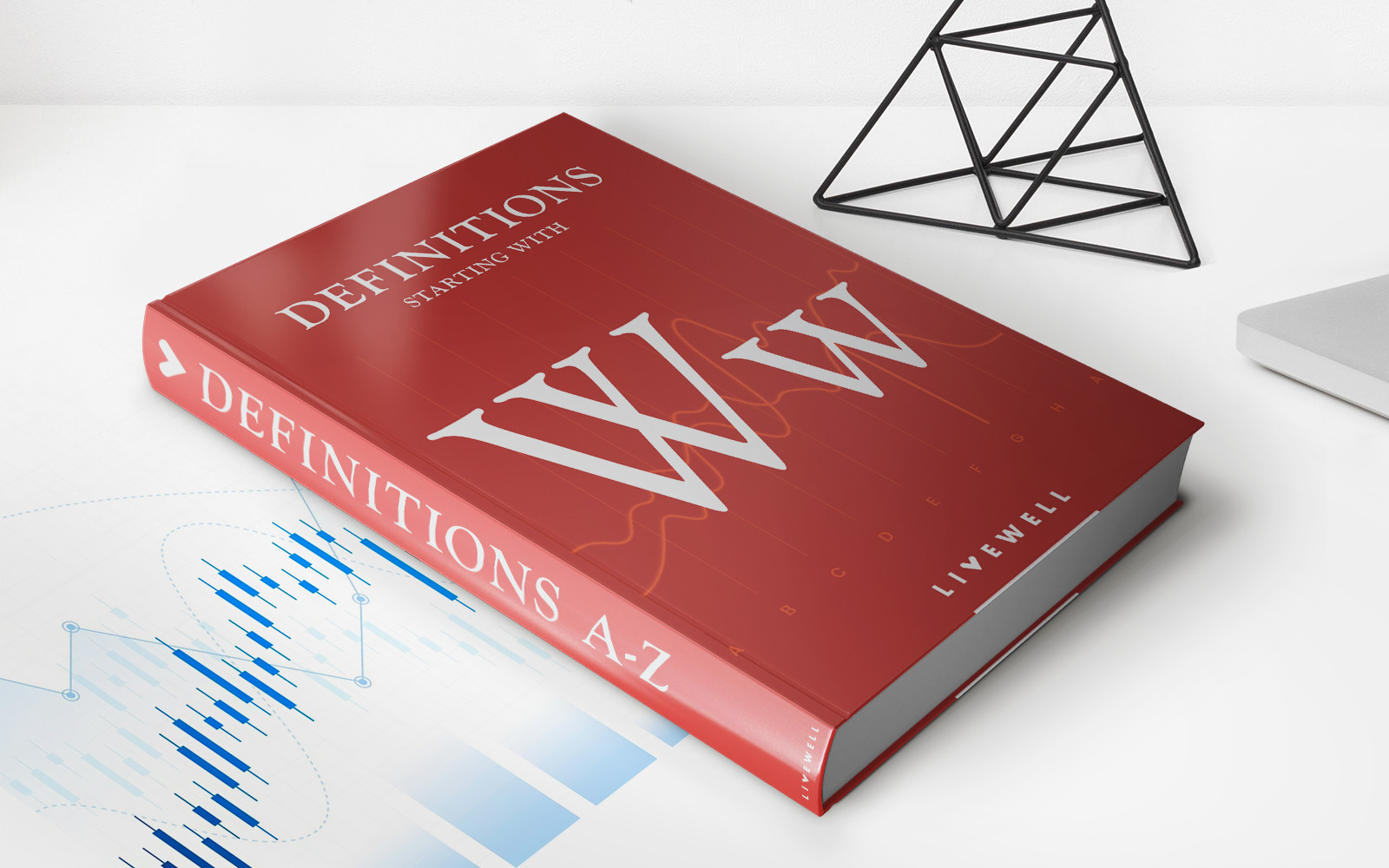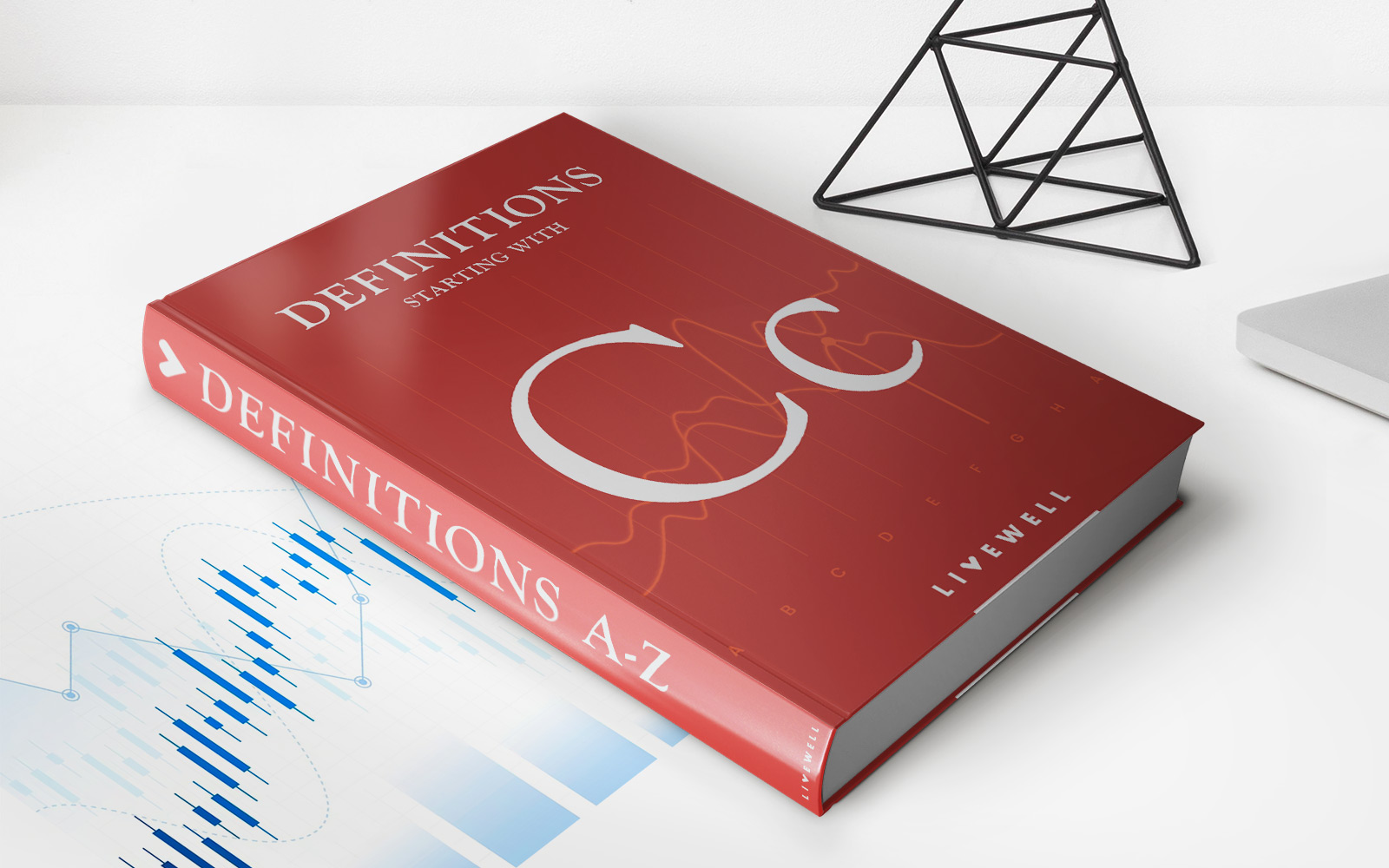

Finance
How Much Is 500K Life Insurance?
Published: November 28, 2023
Find out how much a 500K life insurance policy costs and get your finances in order. Compare rates and protect your loved ones with the right coverage.
(Many of the links in this article redirect to a specific reviewed product. Your purchase of these products through affiliate links helps to generate commission for LiveWell, at no extra cost. Learn more)
Table of Contents
- Introduction
- Factors Affecting the Cost of 500K Life Insurance
- Age and Gender
- Health and Medical History
- Lifestyle and Habits
- Type of Policy and Coverage
- Insurance Provider
- Comparison Shopping for 500K Life Insurance
- Online Insurance Quote Tools
- Requesting Quotes from Multiple Providers
- Evaluating Policy Features and Benefits
- Conclusion
Introduction
When it comes to protecting your loved ones financially, life insurance is an essential consideration. Life insurance provides a safety net for your family in the event of your untimely passing, ensuring that they are not burdened with financial hardship during such a difficult time. One common coverage amount that individuals opt for is 500k life insurance. With a payout of $500,000 to beneficiaries, this type of policy can provide significant support for your loved ones.
However, determining the cost of 500k life insurance can be a complex process, as it is influenced by various factors. Understanding these factors can help you make an informed decision and find the most affordable option that meets your needs. In this article, we will delve into the key elements that affect the cost of 500k life insurance, allowing you to navigate the process confidently.
Factors Affecting the Cost of 500K Life Insurance
Several factors influence the cost of 500k life insurance. These factors are evaluated by insurance providers to assess the risk they are taking on by insuring you, and subsequently determine the premium you will pay. The main factors to consider include age and gender, health and medical history, lifestyle and habits, the type of policy and coverage, and the insurance provider.
Age and Gender
Age and gender play a significant role in calculating the cost of life insurance. Generally, the younger you are, the lower the premium will be, as younger individuals are considered to be at a lower risk of mortality. Additionally, women typically pay lower premiums than men due to their statistically longer life expectancy.
Health and Medical History
Your health and medical history are crucial factors in determining the cost of life insurance. Insurance providers will typically require a medical examination and review your medical records to assess your overall health. Pre-existing medical conditions and lifestyle choices, such as smoking or a history of certain diseases, may increase your premium.
Continue…
Factors Affecting the Cost of 500K Life Insurance
When it comes to determining the cost of 500k life insurance, several factors come into play. These factors are carefully assessed by insurance providers to evaluate the level of risk involved in insuring you and to determine the premium you will need to pay. Understanding these factors will help you make informed decisions about your life insurance coverage.
Age and Gender:
Age and gender are two critical factors that significantly impact the cost of life insurance. Generally, younger individuals tend to pay lower premiums because they are considered to be at a lower risk of mortality. On the other hand, older individuals may face higher premiums due to the increased likelihood of health complications and a shorter life expectancy. Additionally, women typically pay lower premiums compared to men, as they tend to have a longer life expectancy.
Health and Medical History:
Your overall health and medical history also play a crucial role in determining life insurance costs. Insurance providers will typically require a medical examination and review your medical records to assess any pre-existing conditions or potential health risks. Conditions such as heart disease, cancer, and diabetes can increase the cost of life insurance, as they present a higher risk of mortality. Similarly, tobacco use or a history of substance abuse can also lead to higher premiums.
Lifestyle and Habits:
Your lifestyle choices and habits can impact the cost of life insurance as well. Engaging in risky behaviors, such as participating in extreme sports or having a dangerous occupation, may result in higher premiums. Similarly, if you have a history of risky habits like reckless driving or excessive alcohol consumption, insurance providers may consider you to be a higher risk and charge higher premiums accordingly.
Type of Policy and Coverage:
The type of life insurance policy and the coverage amount you choose will also influence the cost. Generally, there are two main types of life insurance: term life insurance and permanent life insurance. Term life insurance offers coverage for a specific period, while permanent life insurance provides coverage for your entire life. Permanent life insurance tends to be more expensive due to its lifelong coverage, cash value component, and potential investment returns.
Insurance Provider:
The insurance company you choose will also impact the cost of your life insurance policy. Different insurance providers have their own underwriting guidelines, risk assessments, and pricing models, which can result in variations in premiums. It’s essential to compare quotes from multiple providers to ensure you are getting the most competitive rates for your desired coverage.
Continue…
Age and Gender
When it comes to determining the cost of life insurance, age and gender are two critical factors that insurance providers take into account. These factors play a significant role in assessing the risk associated with insuring an individual and calculating the appropriate premiums.
Age:
Age is a crucial factor in determining life insurance costs. Generally, the younger you are, the lower your premiums will be. This is because younger individuals are considered to be at a lower risk of mortality compared to older individuals. Insurance providers base their risk assessments on actuarial tables, which show the statistical likelihood of someone passing away at different ages. Younger individuals have a longer life expectancy, and statistically, they have a lower probability of making a claim during the policy term. As a result, insurance providers can offer lower premiums to younger individuals.
On the other hand, as you get older, the premiums for life insurance tend to increase. This is because aging is often accompanied by an increased risk of health complications and a shorter life expectancy. Insurance companies factor in these higher risks and adjust the premiums accordingly. Premiums can increase significantly as you enter your 40s, 50s, and beyond, making it essential to consider purchasing life insurance earlier in life to secure more affordable rates.
Gender:
Gender is another influential factor when it comes to life insurance pricing. Statistically, women have a longer life expectancy compared to men. This means that insurance providers often offer lower premiums for women compared to men. Women tend to live longer and have a lower probability of making a claim during the policy term, which results in lower risk for insurance companies. However, it’s important to note that the gender-based pricing factor has its own set of regulations and may vary depending on the jurisdiction or insurance provider.
Insurance providers use actuarial data to assess the mortality risk associated with each gender and adjust the premiums accordingly. While gender does impact the cost of life insurance, it is not the sole factor. Other elements such as health, lifestyle, and coverage amount also play a significant role in determining the final premium.
Continue…
Health and Medical History
Your health and medical history are critical factors that insurance providers consider when determining the cost of life insurance. Insurance companies assess these factors to evaluate your overall health and the level of risk involved in insuring you.
Medical Examination:
During the life insurance application process, insurance providers may require you to undergo a medical examination. This examination typically includes a physical evaluation, blood tests, and possibly other diagnostic tests, depending on your age and the coverage amount you are seeking. The results of these medical tests provide insurers with valuable information about your health and any underlying medical conditions that may affect your mortality risk.
Pre-Existing Conditions:
If you have any pre-existing medical conditions, such as heart disease, diabetes, or cancer, it may impact the cost of your life insurance premiums. Insurance companies view pre-existing conditions as potential risk factors, as they may increase the likelihood of premature death or the need for costly medical treatments. The severity and stability of these conditions will also be taken into account when determining the final premium. In some cases, individuals with pre-existing conditions may need to pay higher premiums or obtain coverage through specialized insurance providers.
Lifestyle Choices:
In addition to your medical history, your lifestyle choices also influence the cost of life insurance. Certain habits and behaviors can pose higher risks to insurers, leading to increased premiums. For example, if you are a smoker or use tobacco products, you are likely to pay higher premiums due to the health risks associated with smoking. Insurance companies may also consider other high-risk activities such as extreme sports or occupations that have higher rates of injury or mortality.
Medication and Treatment:
Insurance providers will also take into account any prescription medications or ongoing treatments you may have. Some medications or treatments may indicate the presence of underlying health conditions or ongoing medical needs, which can impact the cost of insurance. It is essential to disclose all relevant information about your medical history, including any current medications or treatments, to ensure accurate pricing.
Overall, your health and medical history are significant factors in determining the cost of life insurance. It is important to provide accurate and detailed information during the application process to ensure that you receive an appropriate quote and coverage that meets your needs.
Continue…
Lifestyle and Habits
When it comes to determining the cost of life insurance, your lifestyle choices and habits play a crucial role. Insurance providers take into account these factors as they assess the level of risk associated with insuring you.
Risky Activities:
If you engage in high-risk activities or have a dangerous occupation, insurance companies may consider you to be a higher risk, resulting in higher premiums. Activities such as skydiving, rock climbing, or participating in extreme sports are typically perceived as higher risk due to the increased likelihood of accidents or injuries. Similarly, if you have a job that involves working at heights, handling hazardous materials, or operating heavy machinery, it can also impact the cost of your life insurance.
Driving Record:
Your driving record can also affect the cost of life insurance. If you have a history of reckless driving, multiple speeding tickets, or DUI (Driving Under the Influence) convictions, insurance providers may view you as a higher risk. Such behavior on the road can indicate a disregard for safety, which increases the probability of accidents and premature death. As a result, insurance companies may charge higher premiums to offset the additional risk.
Smoking and Substance Abuse:
Tobacco use and substance abuse are significant factors that impact the cost of life insurance. It is widely known that smoking increases the risk of various health conditions, including heart disease, stroke, and cancer. As a result, smokers typically pay higher premiums compared to non-smokers. Similarly, individuals with a history of substance abuse, such as drug or alcohol addiction, may also face higher premiums. Substance abuse can lead to health complications and increase the risk of premature death, prompting insurers to adjust the premiums accordingly.
Overall Health and Fitness:
Your overall health and fitness level can influence the cost of life insurance. Insurance providers may consider factors such as your body mass index (BMI), blood pressure, cholesterol levels, and overall fitness when determining the premium. Those with a healthy lifestyle and maintained physical health are often perceived as lower risk and may be offered lower premiums. Conversely, individuals with poor health or underlying health conditions that could affect their mortality risk may face higher premiums.
When applying for life insurance, it’s essential to provide accurate information about your lifestyle choices and habits. Failure to disclose relevant information can lead to claim denial or policy cancellation in the future. By being transparent about your lifestyle, you can ensure that you receive accurate quotes and the right coverage for your needs.
Continue…
Type of Policy and Coverage
When considering life insurance, the type of policy and coverage you choose will have a significant impact on the cost. There are two primary types of life insurance: term life insurance and permanent life insurance.
Term Life Insurance:
Term life insurance provides coverage for a specific period, typically ranging from 10 to 30 years. It offers a death benefit to your beneficiaries if you pass away during the term of the policy. Term life insurance tends to be more affordable compared to permanent life insurance because it provides coverage for a limited time. The cost of term life insurance depends on various factors, including your age, health, coverage amount, and the length of the term.
Permanent Life Insurance:
Permanent life insurance provides coverage for your entire life as long as you pay the premiums. It includes a death benefit for your beneficiaries, but it also has an additional cash value component that accumulates over time. This cash value can be accessed during your lifetime and used for various purposes, such as borrowing against it or as a source of retirement income. Permanent life insurance tends to have higher premiums compared to term life insurance due to its lifelong coverage and cash value component.
Coverage Amount:
The coverage amount you choose for your life insurance policy will also impact the cost of the premiums. A higher coverage amount means a larger payout to your beneficiaries in the event of your passing, which translates to a higher risk for the insurance company. Consequently, higher coverage amounts typically result in higher premiums.
It’s important to consider your financial goals and needs when determining the type of policy and coverage amount. If you need coverage for a specific period, such as until your mortgage is paid off or until your children are financially independent, term life insurance may be a more cost-effective option. On the other hand, if you want lifelong coverage and the potential to build cash value, permanent life insurance may be more suitable for your needs.
When comparing quotes for life insurance, be sure to consider the type of policy and coverage amount to ensure you are getting the most appropriate and affordable coverage for your situation.
Continue…
Insurance Provider
The choice of insurance provider can have a significant impact on the cost of your life insurance policy. Different insurance companies have their own underwriting guidelines, risk assessment methodologies, and pricing models. It is important to consider these factors when comparing quotes and selecting an insurance provider.
Underwriting Guidelines:
Each insurance company has its own set of underwriting guidelines that determine how they assess risk and evaluate applicants. These guidelines take into account various factors such as age, gender, health, lifestyle choices, and medical history. Insurance providers may have different criteria and weightage for these factors. As a result, you may receive different quotes from different insurance companies, even if the coverage amount and other details are the same.
Risk Assessment:
Insurance companies employ actuaries who use statistical models and data to assess risk. They analyze the data to determine the likelihood of a policyholder making a claim and calculate the appropriate premiums based on that risk assessment. Different insurance providers may have different interpretations of risk, which can result in variations in premium rates.
Pricing Model:
Insurance companies use pricing models to determine the cost of life insurance. These models consider various factors, including mortality tables, expenses, investment returns, and profitability targets. The pricing model used by each insurance provider can impact the premium rates they offer. Some insurance companies may prioritize competitive pricing to attract customers, while others may focus on offering more extensive coverage and benefits, which may come at a higher cost.
Financial Stability:
It is also essential to consider the financial stability and reputation of the insurance provider. Life insurance is a long-term commitment, and you want to ensure that the company you choose will be able to fulfill their obligations in the future. Research the financial ratings and reviews of potential insurance providers to assess their strength and stability in the industry.
When comparing quotes for life insurance, it’s advisable to obtain quotes from multiple insurance providers. This will allow you to evaluate the premiums, coverage options, and customer service offered by each company. Take the time to research and compare the reputation and financial stability of the insurance providers before making a decision.
Continue…
Comparison Shopping for 500K Life Insurance
When it comes to purchasing 500k life insurance, it is important to engage in comparison shopping to ensure you find the most suitable policy at an affordable price. Comparison shopping allows you to evaluate different insurance providers, policies, and coverage options to make an informed decision.
Online Insurance Quote Tools:
One convenient way to compare life insurance options is by using online insurance quote tools. These tools allow you to input your information and receive quotes from multiple insurance providers instantly. Online quote tools provide an easy and efficient way to compare premiums, coverage amounts, and policy features, enabling you to make side-by-side comparisons.
Requesting Quotes from Multiple Providers:
While online quote tools provide a quick comparison, it is also recommended to reach out to insurance providers directly to obtain personalized quotes. Contact several insurance companies and request quotes for your desired coverage amount. Provide accurate and consistent information to receive accurate quotes that reflect your specific circumstances.
Evaluating Policy Features and Benefits:
When comparing quotes, it’s not just about the premium amount. Look beyond the cost and consider the policy features and benefits offered by each insurance provider. Assess factors such as the length of coverage, any additional riders, cash value accumulation options, and potential policy conversion opportunities. Consider how these features align with your financial goals and priorities.
Customer Service and Reputation:
Consider the customer service and reputation of the insurance providers you are considering. Research customer reviews and ratings to get an idea of the level of customer satisfaction and the company’s reliability in meeting its policy obligations. The reputation and track record of the insurance provider can give you peace of mind knowing that they will be there to support your loved ones when needed.
Consulting with a Financial Advisor:
If you’re unsure which life insurance policy is best for you, consider consulting with a financial advisor. They can provide personalized guidance based on your individual financial situation and goals. A financial advisor can help you compare policies, assess your coverage needs, and make an informed decision.
By engaging in comparison shopping and considering all the relevant factors, you can find a 500k life insurance policy that provides the coverage you need at a price that fits your budget. Take the time to research, evaluate, and ask questions before making a final decision.
Continue…
Online Insurance Quote Tools
When shopping for life insurance, utilizing online insurance quote tools can be incredibly beneficial. These tools provide a convenient and efficient way to compare different insurance policies and obtain quotes from multiple insurance providers, all from the comfort of your own home.
Convenience and Accessibility:
Online insurance quote tools allow you to access quotes anytime, anywhere. Rather than having to schedule appointments or make phone calls, you can simply enter your information into the online tool and receive quotes instantly. This convenience allows you to gather information and compare quotes at your own pace.
Time and Cost Savings:
By using online insurance quote tools, you can save a significant amount of time and effort. Instead of individually contacting multiple insurance providers, you can receive quotes from several companies with just a few clicks. This streamlines the process and helps you quickly identify the most competitive premiums.
Additionally, online quote tools can help you save money. By comparing quotes from different insurance providers, you can easily identify the policies that offer the most value for your desired coverage amount. This enables you to make an informed decision and choose a policy that fits within your budget.
Accurate and Instant Comparison:
Online insurance quote tools provide accurate and instant comparisons of different policies and premiums. These tools take into account factors such as your age, gender, health, and coverage amount, generating customized quotes based on your specific information. This allows you to see the cost differences between various policies and make an informed choice.
Customization and Flexibility:
Another advantage of online insurance quote tools is the ability to customize your coverage preferences. You can easily adjust the coverage amount or select different policy options to see how it affects the premium. This flexibility allows you to tailor the policy according to your specific needs and budget.
Additional Resources and Information:
Many online insurance quote tools provide additional resources and information to assist you in making a well-informed decision. These may include articles, FAQs, and guides to help you understand the various aspects of life insurance and the different policy options available.
While online insurance quote tools add convenience and efficiency to the comparison shopping process, it is essential to keep in mind that they are just a starting point. It is recommended to follow up with insurance providers to obtain more detailed information and clarify any questions or concerns you may have before finalizing your life insurance policy.
Continue…
Requesting Quotes from Multiple Providers
When shopping for life insurance, it is crucial to request quotes from multiple insurance providers. By obtaining quotes from various companies, you can compare premiums, coverage options, and policy features to ensure you find the best fit for your needs. Here are some reasons why requesting quotes from multiple providers is essential:
Price Comparison:
One of the main benefits of requesting quotes from multiple insurance providers is the ability to compare prices. Each insurance company has its own underwriting guidelines and pricing models, resulting in variations in premium rates. By obtaining multiple quotes, you can easily identify the most competitive premiums and potentially save money on your life insurance policy.
Policy Features and Benefits:
Insurance policies can vary in terms of features and benefits. By requesting quotes from multiple providers, you can compare the policy features and benefits offered, such as the inclusion of riders, cash value accumulation options, or the ability to convert the policy in the future. This allows you to choose a policy that not only fits your budget but also offers the coverage and benefits that align with your specific needs and preferences.
Customer Service and Reputation:
Requesting quotes from multiple insurance providers also provides an opportunity to assess the customer service and reputation of each company. Research customer reviews and ratings to gain insights into the experiences of policyholders with each provider. Choosing an insurance company with a strong reputation for excellent customer service can provide peace of mind knowing that you will be well-supported throughout the life of your policy.
Customized Coverage:
Life insurance needs are unique to each individual. By comparing quotes from multiple providers, you can customize your coverage by adjusting factors such as the coverage amount, policy duration, or optional riders. This allows you to tailor the policy to your specific needs, ensuring you have the appropriate level of coverage at an affordable price.
Policy Transparency:
Obtaining quotes from various insurance providers gives you a chance to review and compare the details of each policy thoroughly. This includes understanding any exclusions, limitations, or restrictions that may be present in the policy. By carefully reviewing multiple quotes, you can ensure that you are fully aware of the terms and conditions of each policy and can make an informed decision.
Remember, the goal of requesting quotes from multiple providers is to gather as much information as possible to make an educated choice. Take your time to review and compare each quote thoroughly, considering not only the price but also the overall value, coverage options, and reputation of the insurance provider. This diligent process will help you secure the most suitable life insurance policy for your needs and financial goals.
Continue…
Evaluating Policy Features and Benefits
When shopping for life insurance, it is essential to carefully evaluate the policy features and benefits offered by various insurance providers. Understanding and comparing these aspects will help you choose a policy that aligns with your needs and provides the necessary coverage. Here are some key considerations when evaluating policy features and benefits:
Death Benefit:
The death benefit is the amount that will be paid out to your beneficiaries upon your passing. Consider the coverage amount offered by different insurance providers and determine if it is sufficient to meet the financial needs of your loved ones. It is also important to check if the death benefit is guaranteed or subject to certain conditions.
Policy Type:
There are different types of life insurance policies available, such as term life insurance and permanent life insurance. Evaluate the suitability of each policy type based on your financial goals and needs. Term life insurance provides coverage for a specific period, while permanent life insurance offers lifelong coverage and may include a cash value component.
Policy Riders:
Riders are optional add-ons that can enhance the coverage of your policy. Examples include accidental death benefit riders, accelerated death benefit riders, and waiver of premium riders. Evaluate the riders available from different providers and consider if they provide additional benefits that are important to you.
Guaranteed Insurability:
Some policies may offer the option to increase coverage in the future without undergoing additional underwriting or medical exams. This can be beneficial if you anticipate a need for more coverage as your circumstances change. Evaluate whether this feature is offered and under what conditions it can be exercised.
Cash Value Accumulation:
If you are considering permanent life insurance, understand how the cash value component of the policy works. Evaluate the potential for the cash value to grow over time and the options for accessing or utilizing this cash value. Consider if the policy offers surrender value, loans, or potential dividends.
Conversion Options:
If you opt for term life insurance, check if the policy includes a conversion option. This allows you to convert your term policy into a permanent policy without the need for further underwriting. Having this option can be valuable if your circumstances change, and you desire lifelong coverage.
Premium Flexibility:
Consider the flexibility of premium payments offered by the insurance providers. Some policies may allow you to choose different payment frequencies, such as monthly, quarterly, or annually. Evaluate if the payment options align with your budget and financial preferences.
Evaluating the policy features and benefits of different insurance providers will help you determine which policy offers the most comprehensive coverage for your needs. Take the time to review these aspects and ask questions to ensure you have a clear understanding of what each policy entails. By selecting a policy with favorable features and benefits, you can have confidence in the coverage it provides for you and your loved ones.
Continue…
Conclusion
Securing 500k life insurance coverage is an important step in providing financial protection to your loved ones in the event of your passing. Throughout this article, we have explored the various factors that can influence the cost of 500k life insurance, including age, gender, health, lifestyle, the type of policy, and the insurance provider.
Age and gender play a significant role in determining the cost of life insurance, with younger individuals generally paying lower premiums and women often paying less than men due to their longer life expectancy. Health and medical history, including pre-existing conditions and lifestyle choices, can also impact insurance costs. Insurance providers assess these factors to gauge the level of risk associated with insuring you.
The type of policy and coverage amount you choose will also affect the cost of life insurance. Term life insurance typically offers more affordable premiums as it provides coverage for a specific period, while permanent life insurance tends to have higher premiums due to its lifelong coverage and potential cash value accumulation.
When comparing insurance quotes, it is important to evaluate the features and benefits of each policy, including the death benefit, policy riders, guaranteed insurability options, cash value accumulation, conversion options, and premium flexibility. Additionally, considering the reputation and customer service of insurance providers can provide peace of mind knowing that you will be supported throughout the life of your policy.
To find the most suitable and affordable 500k life insurance policy, it is crucial to engage in comparison shopping. Utilize online insurance quote tools, request quotes from multiple providers, evaluate policy features and benefits, and consider consulting with a financial advisor if needed.
Ultimately, understanding these factors and making informed decisions will help you secure the 500k life insurance coverage that best meets your needs and provides the financial protection and peace of mind you desire for your loved ones.














